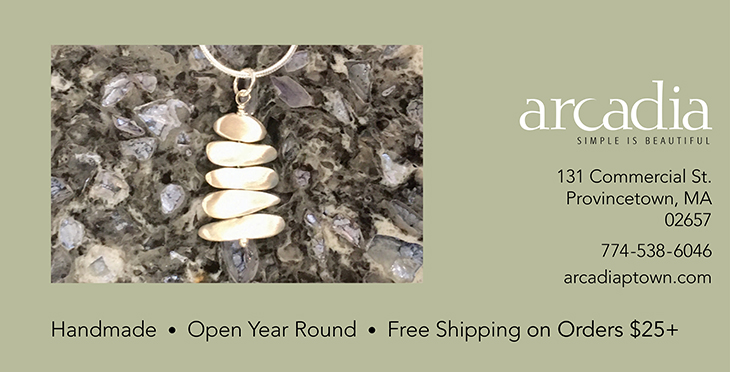The wood floors of Jeff Soderbergh’s furniture workshop in Portsmouth, R.I. were salvaged from the box cars of old freight trains. The beams that support the building, which sits right on the water, are vintage, too, taken from New Bedford and Fall River factories.
In the summers, Soderbergh shows and sells his work, and the work of other designers and artists, at his shop on West Main Street in Wellfleet. He’s had that space since 2011. In 2022, he took over the rest of the building from his wife, Natasha, who until that year had run the clothing store Karol Richardson there for 30 years. Summers in Wellfleet are “as close to a 1970s experience as we could get for our kids,” he says. “Go out and play, get muddy, dig holes, catch crabs, and be home at dark.”

Hanging from a tree outside the Wellfleet shop is a ring chair: a circular outdoor hammock made from steel and seasoned mahogany. It’s a design Soderbergh says he perfected in 2010. He’s made 150 of them since then. Nearly everything else that he makes is a custom piece: knotty wooden tables, polished satin smooth, luxuriously sculpted benches, cutting boards and bowls that still smell of the windfall wood they’re carved from.
The ring chair began as a challenge: to design an outdoor hammock that would be “comfortable, sculptural, and last in the New England weather,” he says. In his first designs, something about the hammock shape wasn’t right: the sitter was staring at the sky. “I wanted it to be more social.” He drew a body in the shape he envisioned: head up, knees bent to support a book. Around it, he drew the chair.
“I couldn’t believe I was drawing a circle,” he says. “It was just so simple.” The chair was comfortable, says Soderbergh, and encouraged conversation, just as he had hoped. Sitters in it smiled: “It was like an adult tire swing.”
For the ring of metal, Soderbergh chose Cor-Ten steel, a material originally used for railroad coal wagons. Regular steel, when exposed to the elements for a long time, rusts and disintegrates. Cor-Ten, named for its corrosion resistance and tensile strength, won’t do that. It seals itself with a rust barrier. Soderbergh found a large supply of it left over from shipbuilding. “I also thought it had a beautiful surface,” he says.

He measures the steel, drills preparatory holes, and rolls it into a hoop using a high-pressure industrial rolling machine. Next come the wooden slats that, lined up as for a barrel, form the curving seat. The wood is mahogany from a boatbuilder in Newport. It’s left over from a supply purchased for a boat he’d built in the 1960s. Mahogany is dense, says Soderbergh, with the slats secured to the steel by marine-grade stainless-steel screws, the chair will endure rain and snow for 50 to 80 years, he says.
Soderbergh grew up in Jamestown, R.I. and graduated from the University of Rhode Island in 1990 with a degree in anthropology. Then he toured as the lead singer in the rock band Toad House until the group disbanded in 1998. In every town, he saw architectural salvage — discarded columns, corbels, decorative moldings, and stained-glass windows that, he says, “tugged at my soul.”
He made a list of the pieces he wanted to come back for. Those became wall assemblages, which he began to show in galleries in New England and Canada. But his focus shifted: he wanted to make furniture of his own. He started reading woodworking manuals from the 1950s and ’60s. “I spent the next 10 years in the library,” he says.
His Portsmouth workshop is a museum of forgotten artifacts: beams and bricks, pieces of buildings and ships, glass, wood, and metal. “At one point, I had 90,000 feet of the Coney Island boardwalk,” he says. The wood was being replaced with synthetic materials.
Soderbergh persuaded Brooklyn officials to let him take the old wood. It was ipe, a tropical hardwood so dense it doesn’t float. “Those trees were probably 1,000 years old when they were cut down in the Amazon rainforest,” he says.
He used much of the wood for the interior of a shop he was renovating in the city. With what was left of the boardwalk, Soderbergh made the seats for the first 50 ring chairs.
“The goal is to build things that are lasting, that are generational, that you can give to your kids and grandkids,” he says. “To make something that stands the test of time.”



